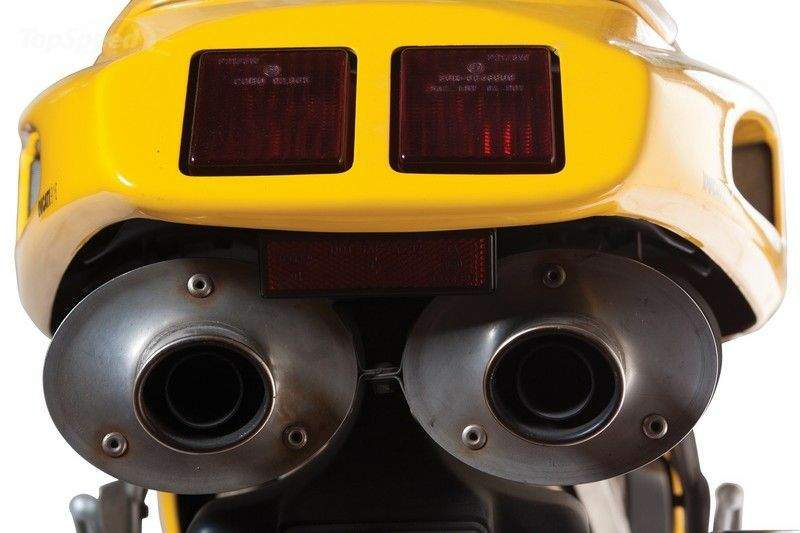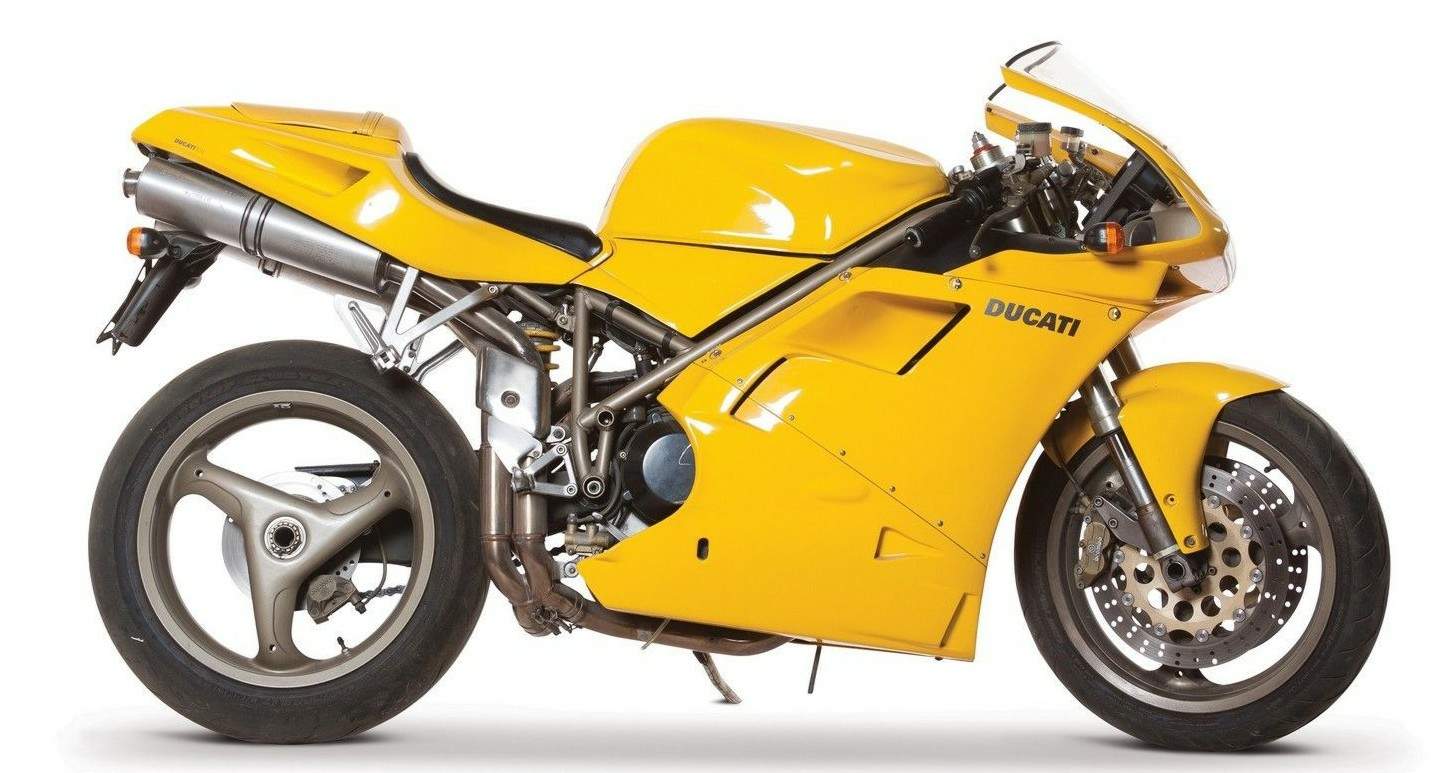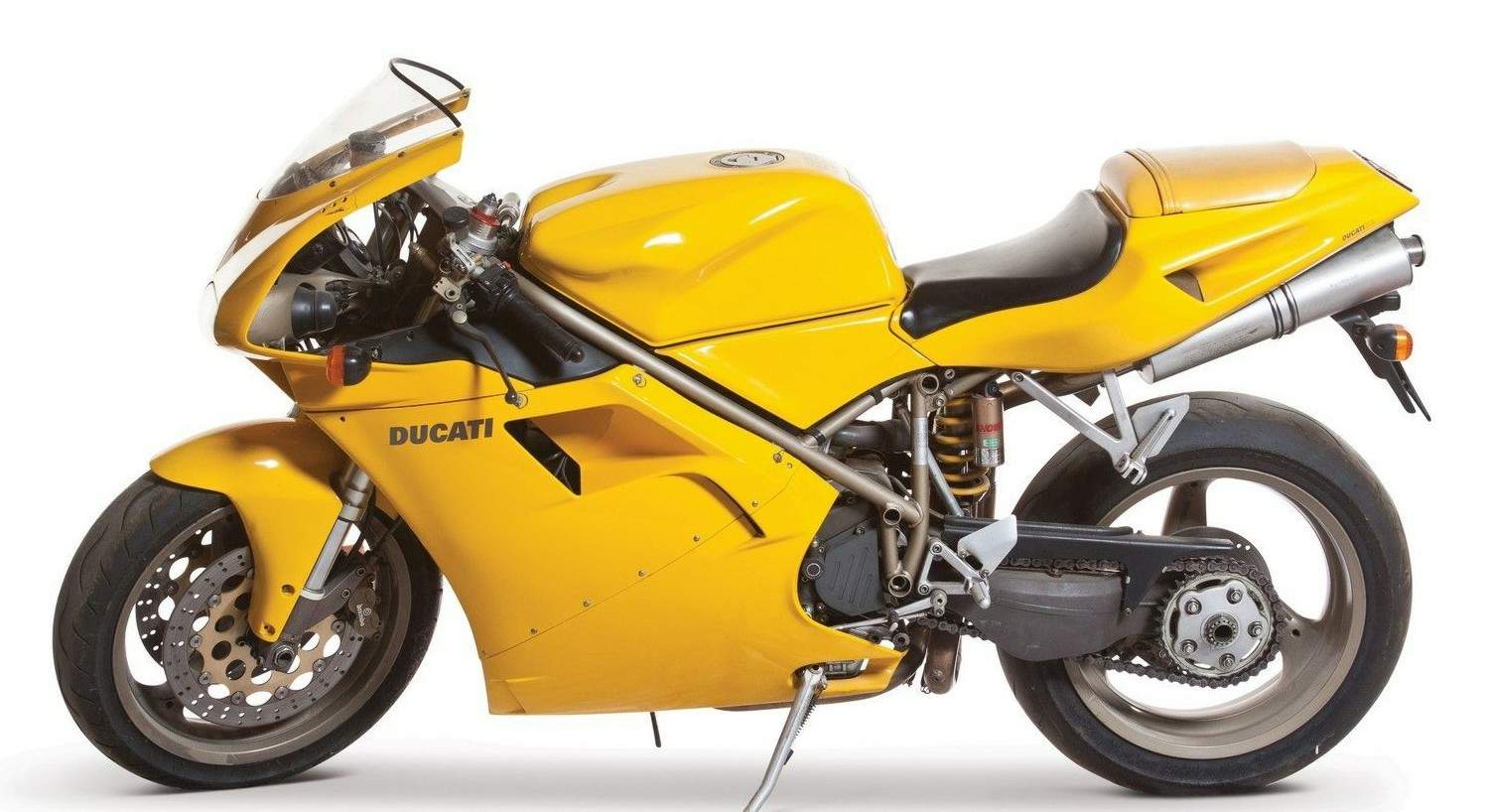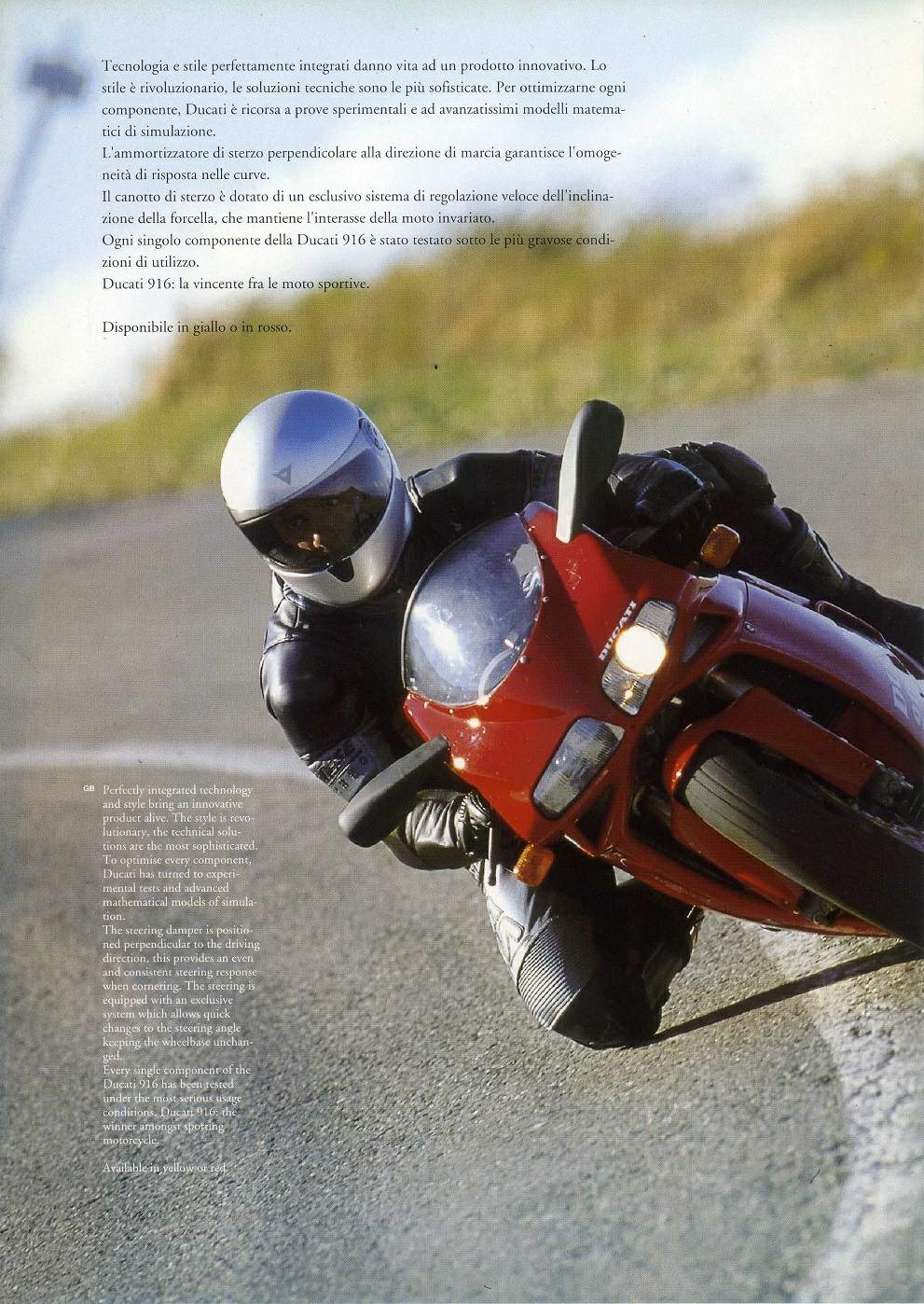The 916 also introduced the self-retracting side stand. Known colloquially as the "suicide stand," it allowed new riders who mistakenly believed it to be down –- when in fact they had accidentally retracted it by uprighting the bike -– to keep many a dealership parts department busy with orders for left-hand fairings and mirrors.
Despite its larger-than-life reputation, the 916 was surprisingly small. The L-twin's narrow dimensions allowed the total package to be only slightly larger than a 250 Grand Prix bike. With a tall seat height, but rearsets that were both up and back, it was a bike for neither tall nor short riders. The first two model years were offered solely as one-seaters (monoposto), which was ultimately a blessing, as passengers would later find their accommodations worse than the riders'.
Thankfully, the 916 was so beautiful that nobody cared. From the sleek, narrow tail section to the steeply angled nose fairing, the Ducati exuded mechanical sexuality. For the first year, gushing reviews of the motorcycle contained just as much praise for the bike's beauty as accolades for its engineering. Photographs of the Ducati graced the covers of everything from bike magazines to technical journals, and always in Ducati red — the only color available from 1995 to 1997.
Arguably the most copied motorcycle design in history, the 916 still looks modern today. In a few short years, the bike's single-sided swingarm became almost synonymous with Ducati, as did its twin under-seat mufflers. Side-by-side headlights, one of which was an industry-first projector assembly, were mere bodywork slits compared with the huge rectangular headlights on period Yamahas and twin round units of period Hondas.
Still, the devil was in the Ducati's details. Features like quarter-turn Dzus fasteners, mirrors that required just one bolt to remove, and a rear suspension with independent ride-height adjustment hinted at the racebike lurking beneath street plastics.
The 916 and its descendents also dominated the racetrack. From 1994 to 2002, a Ducati 916 variant won every Superbike Manufacturer's Championship but one and had a rider on the podium over 90 percent of the time. Carl Fogarty's standing record of 59 race wins and four world titles all came on a Ducati 916. But if all it takes is race wins and technological advancement to achieve historical significance, it was the 916's cultural impact that elevated it to icon status.
A quick glance at the evolution of sportbike design over the past fifteen years shows hints of the 916's design in everything from Aprilias to Yamahas. Custom-bike builders the world over would graft single-sided swingarms onto their projects, and exhaust manufacturers clamored to produce an underseat retrofit kit to supply the growing consumer demand for "that Ducati look." From Fled to The Italian Job-remake, the Ducati superbike epitomized performance and style. By the turn of the millennium, Ducatis were found in P-Diddy videos more often than Biggie Smalls.

Not to say that Ducati rested on its laurels, but eight years is an eternity for a motorcycle design. Through the years, subtle changes served to make the 916 seem more pedestrian as the Japanese began to catch up. The frames would go from a beautiful matte gold to a more sterile grey. The aluminum Brembo wheels, embossed with the words "Ducati Racing," were eventually replaced by race-replica five-spoke Marchesinis. Worst of all, the stunning gold fairing decals, noting both the displacement as well as the desmoquattro valvetrain, were axed for generic sans-serif block lettering, a change that paralleled the company's 1998 sale to Texas Pacific Group.
While a handful of 1994 models were built, the first year of standard production for the 916 was 1995. Special models such as the Sport Production (SP) would later be unveiled, followed by SPS and R models built solely for the purpose of race homologation. There were even "privateer specials" with RS suffixes that gave customers the opportunity to ride race-prepped bikes with (almost) all the goodies typically reserved for factory race teams.
In 1997, Ducati offered a middleweight version called the 748. It was identical to the 916 in every way save for a few millimeters of bore and stroke. For 1999, Ducati made the bike more compliant with SBK regulations by bumping displacement to 996 cc, replacing the 916 name in kind. In 2002, Tamburini's design would have its farewell with the one-off 998 superbike, showcasing Ducati's new testastretta engine. This led to the less attractive — but technologically superior — 999, which paved the way for more practical and user-friendly superbikes. The company would later admit that it had perhaps strayed roots, refocusing on that heritage with the 2006 launch of the 1098. Though that bike was an homage to the 916, we were at once disappointed and oddly delighted to see that Tamburini's original design, even when updated, cannot really be improved upon.
When it comes to sportbikes, the Ducati 916 is the epitome of the breed and a true icon. Whether it's Troy Bayliss winning back-to-back superbike races at Imola or — sorry to get dorky here — Carrie-Ann Moss darting between semi trucks in The Matrix Reloaded, the Ducati superbike steals the show and proves that it is, in the finest Italian fashion, just as important as the person riding it. It has transcended the ranks of mere sportbikes to become the two-wheeled equivalent of Porsche's 911 — instantly recognizable simply by its silhouette, or by just three digits.
Source Kilometer Magazine



